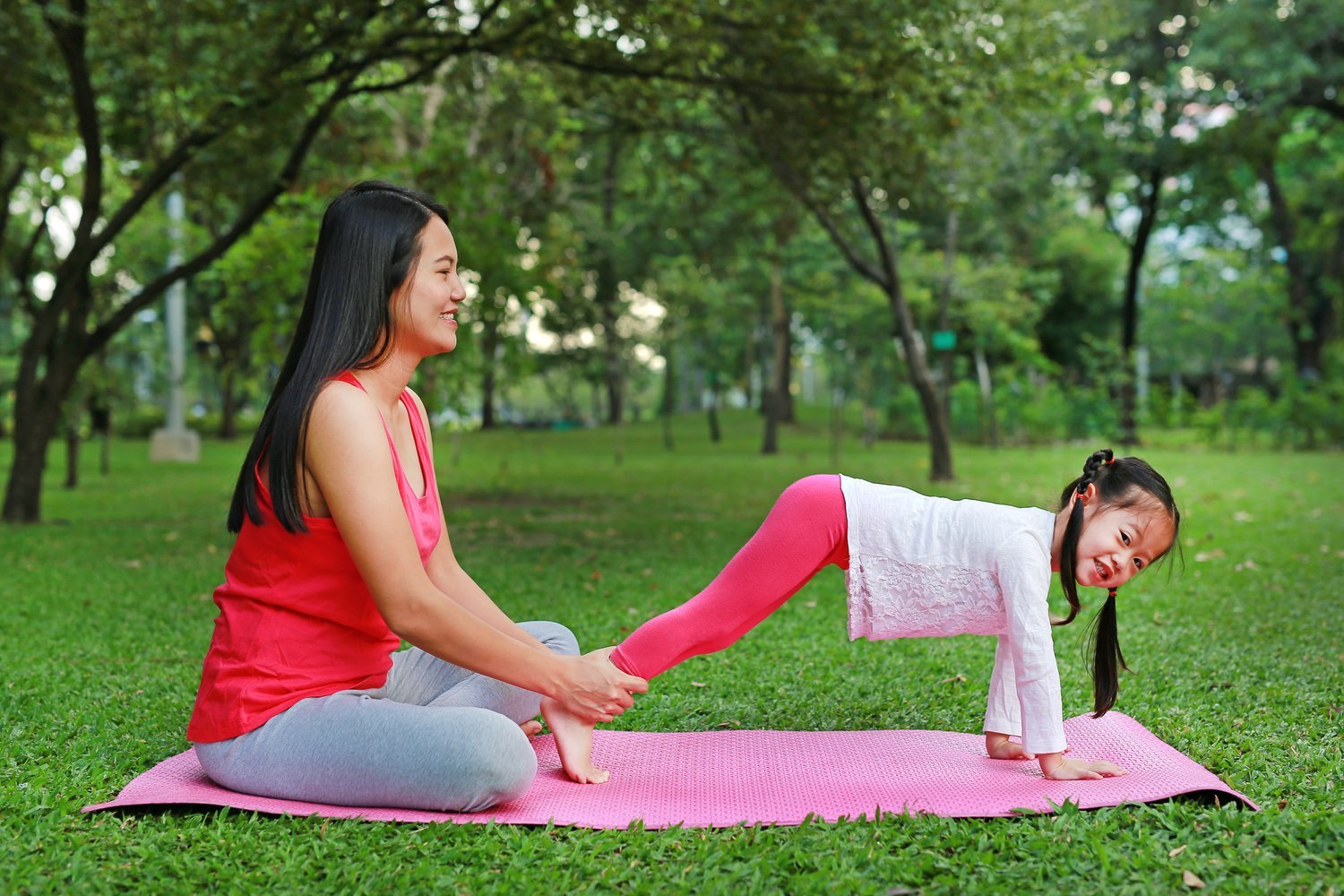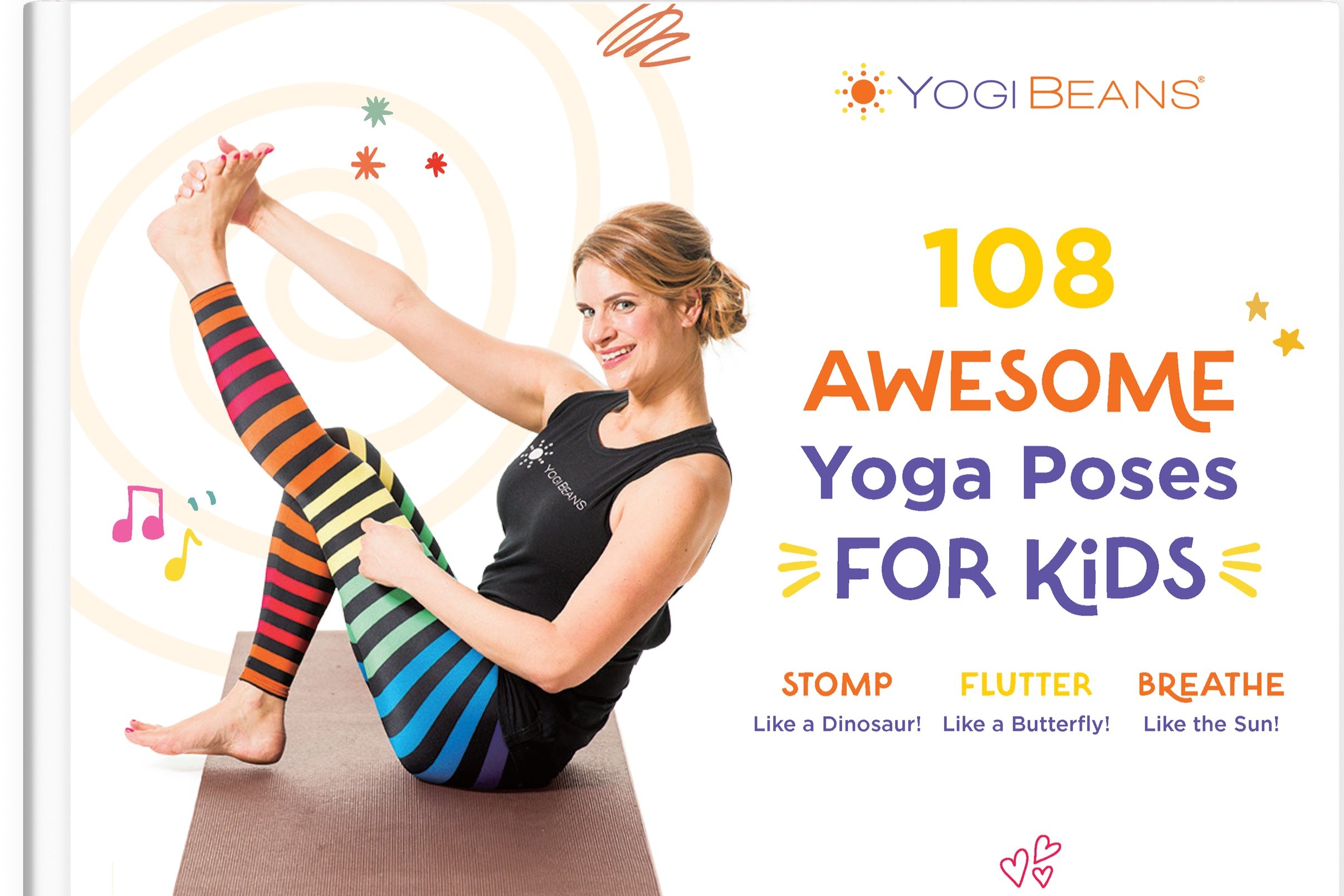12 Fun Kids Yoga Poses to Keep Your Children Balanced and Relaxed
Yoga for kids can be a fun and playful way to introduce them to the benefits of yoga, including improved flexibility, strength, and relaxation.
Many parents are often looking for ways to engage with their children, away from the screen and technology, in ways that allow for a wholesome parent-child connection. Yoga is a great way to build a deeper connection with your children!
However, in the eyes of a child, yoga can seem a bit boring if we don't add an element of creativity and playfulness to the practice.
Want to have the best time with your children doing yoga? - Read on! It will be fun!
Make Yoga Fun with a Kids Yoga Story
If you’re looking to practice yoga with your child, the most important thing to remember is to make yoga fun!
Children respond to energy that is playful and joyous, and you want to infuse that energy into your child’s yoga practice. You can do this in a few different ways:
Play with Contrast: If you want your child to practice being still and quiet, allow them to jump, wiggle and make noise! Specifically, try contrasting the energetic movements with grounded and centering poses. For example, you can try bouncing and wiggling, and then ask your child to hold a Mountain pose (where they stand still) for up to 3 breaths. This gentle give-and-take is a surefire way to help engage your child in the practice of yoga.
Be Silly: Try not to take any yoga practice too seriously! Remind your child that it is perfectly ok to fall down, and of our Yogi Beans mantra: “yoga is a practice, not a perfect.” Try incorporating some silly faces while holding the poses or incorporate a game of freeze yoga.
Pretend to be animals: So many yoga poses are named after animals and things in nature. When practicing animal poses, have fun making animal sounds, offering up interesting animal facts and creating fun stories (e.g: the cat and cow are best friends, the downward dog is ready to chase the cat…”).
Use favorite characters: Pretend to be some of their favorite super hero or princesses and turn the yoga mat into a magical adventure space, with imaginative storytelling. Transform the traditional practice of yoga into a dynamic and entertaining experience that captures their youthful enthusiasm and curiosity.
Don’t forget the music: Choosing the right music for kids' yoga can greatly enhance the overall experience and make the practice more enjoyable. You can pick some of their favourite Disney tracks, or use the Yogi Beans playlist on Spotify and Apple Music
By now, you might have realized that engaging in kids' yoga involves a considerable amount of storytelling and creativity, which can be challenging at times.
In order to help you have the most fun with your kids, we've created a book with over 100 yoga postures and storytelling around them:
The 12 Best Kids Yoga Poses
Poses to help with focus
The use of balancing poses, along with a drishti or focused gaze, enhances concentration and focus. It helps us to find mental and emotional steadiness.
When in a balancing pose, we practice one side and then the other. It’s normal to have one side that is “stronger” than the other, and this opens up a conversation about balance in life, challenges we face, and how we can work through challenges.
1. Eagle (Garudasana)
How to: Begin in Chair pose. Bring your left leg up and cross your left thigh over your right thigh. Hook your left foot around your right calf. Bring your arms out in front and cross your right arm over your left bringing your palms together. Untwist your arms and open up your eagle “wings.” Try the pose on your other side.
Benefits: Eagle pose improves balance, focus, and body awareness. It provides a stretch to the shoulders
Contraindication: Ankle, knee or shoulder injuries
Bean tip: To enhance this pose, try folding forward so that your bound elbows tap your knees. Kids will enjoy the challenge!
2. Tree (Vrksasana)
How to: Begin in Mountain pose. Shift weight over to your right foot while lifting your left foot off the floor. Bend your left knee, bringing the sole of the left foot high onto your inner right thigh. Focus on something that doesn’t move to help you keep your balance. If you are swaying, imagine you are a tree swaying in the wind; if you fall, become a log!
Benefits: Improves balance, opens the hips, aids in focus and concentration
Contraindication: Ankle, knee or hip injury
Bean tip: Play with different variations of your hands such as a lotus mudra overhead, or create “owl eyes” with your hands! If your child struggles with maintaining balance, have them keep their toe on the ground! This will help explore the pose while also keeping them safe and grounded.
3. Airplane
How to: Begin in Mountain pose and stretch one leg straight behind you as you reach your arms out to the sides, like airplane "wings." Lift your back leg slightly off the floor as you begin to lower your torso towards the floor for “takeoff.” Fly your airplane as your leg and torso reach the same level away from the floor. Then get ready for a nose-dive landing as you lift your leg higher away from the floor and bring your torso and head closer down towards the floor. Then reverse the movements for “landing.” Repeat this series of movements on the other side.
Benefits: Creates stability in the body, helps balance, strengthens the abdominal and back muscles
Contraindication: Injury to the back, shoulders, knee, and ankle
Bean tip: Practice flying through the air in different ways! Bird, airplane, or hang glide! Have fun exploring the pose by walking normally, and then calling out the pose to pause fly through the air.
Poses to increase core strength
Core strength in children is one of the most important aspects of their physical body. Having a strong core is the foundation for posture, the ability for children to sit up correctly, both fine and gross motor skills. Even handwriting is affected by core strength!
4. Car (Dandasana)
How to: Sit up tall with your legs straight out in front of you. Reach your arms up to the sky and pull-down your "steering wheel." Remember to put on your seat belt and start your engine. Scoot yourself forward using one leg at a time.
Benefits: Helps expand the upper body while lengthening and stretching the back muscles.
Contraindication: Knee or ankle injuries and children with very weak core.
Bean tip: Be sure to follow the traffic lights and pay attention to other drivers on the road! Practice engaging the core even more by lifting one leg and then the other. Hold it for 10 seconds!
5. Ramp or Slide (Purvottanasana)
How to: Begin in Car pose with your hands a few inches behind your hips, fingers facing forward. Point your toes and lift your hips toward the sky creating a straight line between your head and your toes. Try to find the floor with your toes and open your chest to the sky as you let your head fall back.
Benefits: Opens the airway to improve breathing, strengthens the back and core muscles
Contraindication: Injury to the wrist, fingers, arms, or legs
Bean tip: Practice being a bridge or ramp for cars! Lower your hips to the ground and then lift them back up! Count how many times you can do so.
6. Boat (Navasana)
How to: Balance on your bottom and slowly lift your arms and legs into the air making a “V” position. Now make a sailboat by extending one arm straight up into the air and the other arm straight in front of you. Try switching your "sails" and hold the pose for three breaths.
Benefits: Improves core engagement and strengthens the back and hip flexors
Contraindication: Recent abdominal discomfort (stomach bug), asthma
Bean tip: Try turning your pose into a “Shipwreck” by starting in Boat pose and bringing your knees to one side as if you were in a reclining twist. Children can bend their legs for an easier alternative.
Poses to open the heart and spread kindness
Heart opening poses both help children physically and emotionally. Heart opening poses engage the muscles of the back and the shoulders to improve circulation, increase energy levels, reduce stress and can help improve posture. This theme can prompt discussions around opening your heart to others or allowing ourselves to feel vulnerable.
7. Dancer (Natarajasana)
How to: From Mountain pose, shift your weight onto your right leg. Bend your left knee and grab the inside of your left foot with your left hand. Together, kick your left foot back behind you as you extend your right arm up toward the ceiling. Repeat these movements on the other side.
Benefits: Improves balance, focus, posture, and concentration. Increases energy and helps build confidence!
Contraindication: Lower back pain or neck injury
Bean tip: Pretend to be an ice skater! Dance around the room listening to music, when the music stops find your dancer pose! See how long you can balance.
8. Upward Facing Dog (Urdhva Mukha Svanasana)
How to: Begin lying on your belly with your legs straight and the tops of your feet flat on the floor (more difficult) or your toes tucked (easier). Bend your elbows and place your palms on the floor besides your side ribs. As you inhale, begin to straighten your arms and lift your torso and legs a few inches off the floor, keeping toes tucked or feet flat. Take a few breaths and look up to the ceiling. Remind children to keep their heart lights open by rolling their upper arms back and drawing their shoulders away from their ears.
Benefits: Improves posture, strengthens spine, legs, wrist, and stretches the chest, biceps, and core.
Contraindication: Low back injury
Bean tip: Younger children will have a more difficult time with this position and it is fine to stick with a Cobra pose.
9. Camel (Ustrasana)
How to: Come onto your knees. Tuck your toes underneath so you are on the balls of your feet. Reach your hands back one at a time to grasp your heels. Bring your hips forward so that they are over your knees and arch your back. If comfortable, let your head drop back slowly, opening your throat.
Benefits: Stretches the shoulders, back, thighs and core, opens the chest increasing airflow, and aids in digestion and elimination.
Contraindication: Hernia, abdominal injury, or low back pain
Bean tip: For a more advanced variation, try practicing this pose with the tops of feet flat and toes untucked.
Poses to de-stress and unwind
Children, just like adults, crave the opportunity to relax and unwind. With the demands of school, access to toys, gadgets, and electronics, children are overworked and overstimulated. They welcome savasana, the ability to decompress and settle down. The best part? These poses can be done in the comfort of your own home. Grab some pillows, play calming music, and enjoy the benefits of these restorative poses!
10. Suspension Bridge (Setu Bandha Sarvangasana)
How to: Begin in traditional Bridge pose. With the hips lifted away from the ground, grab a block or pillow and place it underneath the bottom of your sacrum/tailbone region. Let your hips settle down onto the block. Open your chest by turning your palms up. Keep knees bent and allow your hips to melt into the block.
Benefits: Strengthens back, glutes, and hamstrings
Contraindication: Neck or back injury
Bean tip: Slide a pillow under your child’s back, let them relax into the pillow and feel the benefits of this releasing pose
11. Sleeping “L” (Viparita Karani)
How to: Lie on your back near the wall and scoot in to get your bottom as close to the wall as possible. Once in, extend your legs straight up against the wall. Bend your elbows and cactus your arms out to the sides (or think of goal-posts). Take some deep breaths.
Benefits: Releases the pelvic muscles, encourages blood flow to the heart and lungs
Contraindication: Children with eye conditions (glaucoma or detached retina)
Bean tip: Use this as a bedtime routine to prepare your child for a restful nights sleep
12. Sleeping Butterfly (Supta Baddha Konasana)
How to: Sit seated in front of a bolster or pillow behind you. Bring the soles of your feet to touch and allow your knees to flop open as in Butterfly. Place your hands by your side, and slowly lower your trunk onto the prop to support the spine. For extra support, place a yoga block underneath each knee/thigh. Once you are reclined, stretch your arms out to the sides with your palms face up to keep your chest open
Benefits: Stretches the groin, adductors, hamstrings
Contraindication: Children with weak knees or ankles
Bean tip: If you see a child’s chin jutting up towards the ceiling, take a folded blanket and place it underneath his/her head and neck to allow the muscles of the neck and shoulders to relax. This pose should feel delicious!
Conclusion
While obtaining the physical, mental, and emotional benefits of yoga, these themes can also introduce more complex discourse around childrens’ lives. Whichever way you are seeking to bring this practice to the child in your life, you have the ability to help open their mind and heart to the teachings of yoga.
These poses are more can be found in Yogi Beans book 108 Awesome Poses for Kids, which provides a fun and interactive way to introduce children to yoga poses and the mind-body-heart connection. For information on our classes and trainings, visit yogibeans.com.
Anne Davidson is a senior teacher trainer and business developer at Yogi Beans. Connect with Anne at @anneedavidson on Instagram
Connect with us!
Welcome Friends!
Yogi Beans is a yoga and wellness company for children. Come make the world a brighter place with us!





